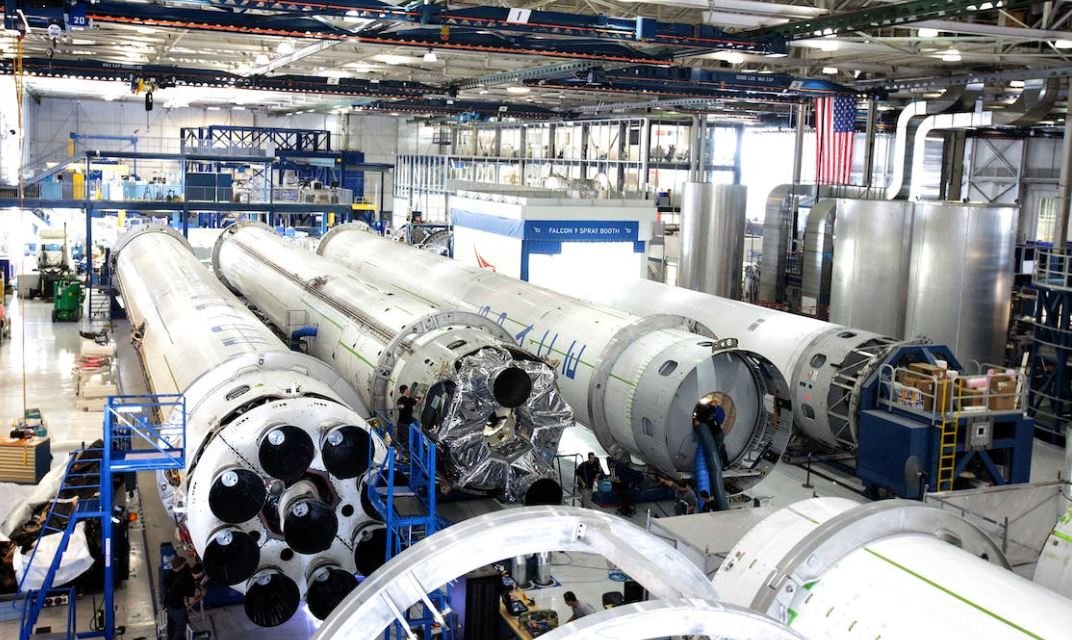Tesla Model S Tire Pressure
Tire pressure plays a crucial role in the performance, safety, and efficiency of your Tesla Model S. Properly inflated tires can enhance handling, extend tire life, improve fuel efficiency, and ensure a smooth ride. In this article, we will explore the recommended tire pressure for the Tesla Model S and why it’s essential to keep your tires inflated correctly.
Key Takeaways
- Proper tire pressure is important for performance, safety, and efficiency in your Tesla Model S.
- Underinflated tires can cause increased rolling resistance, reduced range, and decreased handling.
- Overinflated tires can result in a harsh ride, reduced contact patch, and uneven tire wear.
- The recommended tire pressure for the Model S is 45 psi for the front tires and 42 psi for the rear tires.
Why Tire Pressure Matters
Maintaining the correct tire pressure is crucial as it directly affects your vehicle’s performance and safety. The Tesla Model S relies on its tires for traction, stability, and responsiveness. Incorrect tire pressure can compromise these factors and lead to undesirable outcomes.
Underinflated tires create more rolling resistance, resulting in reduced efficiency and decreased range. They also cause the sidewalls to flex excessively, which can impact handling and cornering ability. On the other hand, overinflated tires provide a harsher ride, reduce the size of the tire’s contact patch, and lead to uneven tire wear. Finding the right balance is key.
Recommended Tire Pressure for Model S
Tesla recommends specific tire pressures for the Model S to optimize performance and efficiency. The recommended tire pressure for the front tires is 45 psi, while the recommended pressure for the rear tires is 42 psi. It is important to adhere to these guidelines to ensure optimal handling, improved energy efficiency, and extended tire life.
The Impact of Incorrect Tire Pressure
Driving with incorrect tire pressure can have various negative consequences. When your tires are underinflated, the increased rolling resistance requires more energy from the battery to move the vehicle. This can result in reduced range and lower overall efficiency. Additionally, underinflation can lead to accelerated tire wear, compromising traction and compromising safety.
Overinflated tires, on the other hand, reduce the contact patch between the tire and the road, affecting grip and handling. This can be particularly noticeable in wet or slippery conditions. Additionally, overinflation can cause the center of the tread to wear faster than the edges, resulting in uneven tire wear and potential tire damage.
Recommended Tire Pressure Check Frequency
Regularly checking your tire pressure is essential for maintaining optimal performance and safety. Tesla recommends checking your tire pressure at least once a month, especially before long trips. External factors like temperature changes can affect tire pressure, so keeping an eye on it ensures that you are driving with the right inflation levels.
Consider investing in a digital tire pressure gauge for accurate measurements, and always check the pressure when the tires are cold to ensure accurate readings.
Tire Pressure Tables
| Tire Position | Recommended Tire Pressure (psi) |
|---|---|
| Front Tires | 45 |
| Rear Tires | 42 |
Tire Pressure Maintenance Tips
- Regularly check your tire pressure using a reliable gauge.
- Keep your tires cold for accurate readings.
- Add or release air as needed to maintain the recommended pressure.
- Consider using nitrogen instead of regular air for better pressure retention.
- Inspect your tires for any signs of damage or wear and replace them when necessary.
Conclusion
Proper tire pressure is key to the performance, safety, and efficiency of your Tesla Model S. Maintaining the recommended tire pressure ensures optimal handling, improved energy efficiency, and extended tire life. Regularly checking and adjusting tire pressure is a simple yet crucial maintenance task that every Tesla owner should prioritize.

Common Misconceptions
1. Tesla Model S requires different tire pressures than conventional cars
One common misconception about Tesla Model S is that it requires different tire pressures compared to conventional cars. However, this is not true. Tesla Model S follows the same recommended tire pressures as other cars in its class. It is important to refer to the vehicle’s user manual or the tire pressure label located on the driver-side door jamb for the correct tire pressure.
- Tesla Model S tire pressures are similar to other cars in its class
- Tesla provides recommended tire pressures in the user manual
- Tire pressure labels on the driver-side door jamb should be followed
2. Overinflating Tesla Model S tires enhances vehicle performance
Another misconception is that overinflating the tires of a Tesla Model S will enhance its performance. In reality, overinflating the tires can lead to poor handling, reduced traction, and increased risk of tire damage. It is crucial to maintain the recommended tire pressure for optimal performance and safety of the vehicle.
- Overinflating tires can diminish vehicle handling
- Higher tire pressure can decrease tire traction
- Tire damage risk increases with overinflation
3. Underinflating Tesla Model S tires improves comfort
Some people believe that underinflating the tires of a Tesla Model S will improve the vehicle’s comfort. However, this is not true. Underinflated tires can negatively impact the vehicle’s handling, fuel efficiency, and increase the risk of tire blowouts. It is essential to follow the recommended tire pressure for a comfortable and safe ride.
- Underinflated tires can affect vehicle handling
- Fuel efficiency decreases with underinflation
- Risk of tire blowouts increases
4. Tesla Model S tires never need to be checked for pressure
Some people mistakenly believe that Tesla Model S tires do not require regular pressure checks. However, like any other vehicle, Tesla Model S tires need to be routinely checked and maintained at the recommended tire pressure. Regular tire pressure checks ensure optimal performance, safety, and longevity of the tires.
- Routine tire pressure checks are necessary for Tesla Model S
- Maintaining recommended pressure ensures optimal performance
- Regular checks contribute to tire longevity
5. Tesla Model S tire pressure is not affected by temperature changes
A common misconception is that Tesla Model S tire pressure remains unaffected by temperature changes. This is not true, as temperature variations can significantly impact tire pressure. Cold weather tends to decrease tire pressure while hot weather can increase it. Regularly monitoring and adjusting tire pressure according to temperature changes is crucial for maintaining safety and optimal performance.
- Temperature changes affect Tesla Model S tire pressure
- Cold weather decreases tire pressure
- Hot weather can increase tire pressure

Tire Pressure Guidelines by Tesla Model S Model
Proper tire pressure is important for ensuring optimal performance and safety of the Tesla Model S. Tesla provides specific recommendations for tire pressure based on the model of the vehicle. The following table outlines the recommended tire pressure for each Tesla Model S model:
| Tesla Model S Model | Front Tire Pressure (PSI) | Rear Tire Pressure (PSI) |
|---|---|---|
| Tesla Model S Standard Range Plus | 42 | 42 |
| Tesla Model S Long Range | 42 | 42 |
| Tesla Model S Plaid | 45 | 45 |
| Tesla Model S Plaid+ (Upcoming) | 46 | 46 |
Comparison of Tesla Model S Tire Pressure Recommendations
The table below showcases the differences in tire pressure recommendations between the various Tesla Model S models. It is important to follow the specific guidelines based on the model to ensure optimal performance and handling.
| Tesla Model S Model | Difference in Front Tire Pressure (PSI) | Difference in Rear Tire Pressure (PSI) |
|---|---|---|
| Tesla Model S Standard Range Plus | 0 | 0 |
| Tesla Model S Long Range | 0 | 0 |
| Tesla Model S Plaid | +3 | +3 |
| Tesla Model S Plaid+ (Upcoming) | +4 | +4 |
Tire Pressure Impact on Efficiency
Properly maintaining the recommended tire pressure not only contributes to the performance and safety of the Tesla Model S but also impacts its efficiency. The table below demonstrates the effect that incorrect tire pressure can have on the vehicle’s efficiency:
| Tire Pressure (PSI) | Range (Miles) |
|---|---|
| Underinflated: 36 | Decrease of 9% |
| Optimal: 42 (Recommended) | Standard Range |
| Overinflated: 48 | Decrease of 21% |
Tire Pressure Monitoring System (TPMS) Warnings
To monitor and maintain the appropriate tire pressure in the Model S, Tesla incorporates a Tire Pressure Monitoring System (TPMS). The table below shows the warnings displayed by the TPMS based on tire pressure:
| TPMS Warning | Front Tire Pressure (PSI) | Rear Tire Pressure (PSI) |
|---|---|---|
| Low Pressure Warning | Below 38 | Below 38 |
| High Pressure Warning | Above 44 | Above 44 |
Impact of Temperature on Tire Pressure
Temperature variations can affect tire pressure, and it is crucial to consider this when monitoring tire pressure. The table below illustrates the approximate variation in tire pressure with temperature:
| Temperature (°F) | Tire Pressure Variation (PSI) |
|---|---|
| 32°F | -2 |
| 86°F | +2 |
| 104°F | +4 |
Tire Pressure Monitoring Frequency
Regularly monitoring and adjusting tire pressure is essential for maintaining optimal performance. The table below highlights the recommended frequency to check tire pressure:
| Driving Condition | Recommended Monitoring Frequency |
|---|---|
| Normal Driving | Monthly |
| Extreme Temperature Fluctuations | Weekly |
| Long Distances or Increased Load | Before and After the Trip |
The Importance of Proper Tire Inflation
Proper tire inflation plays a significant role in vehicle performance, safety, and handling. The table below showcases the advantages of maintaining the recommended tire pressure:
| Advantages of Proper Tire Inflation |
|---|
| Improved Handling and Stability |
| Enhanced Braking Performance |
| Reduced Tire Wear |
| Increased Energy Efficiency |
| Optimized Driving Range |
Safety Precautions for Tire Pressure Maintenance
When checking and adjusting tire pressure, it is important to follow specific safety precautions. The table below lists the safety steps to consider:
| Safety Precautions |
|---|
| Use a Reliable Pressure Gauge |
| Measure Tire Pressure when Cold |
| Refer to the Owner’s Manual for Proper Techniques |
| Securely Tighten Valve Stem Caps |
| Inspect Tires for any Damage or Abnormalities |
Overall, maintaining the recommended tire pressure for your Tesla Model S is vital for optimal performance, safety, and efficiency. Following Tesla’s guidelines, monitoring tire pressure regularly, and understanding the impact of temperature variations contribute to a smooth and enjoyable driving experience.
Tesla Model S Tire Pressure – Frequently Asked Questions
FAQs
What is the recommended tire pressure for Tesla Model S?
Why is it important to maintain the proper tire pressure in a Tesla Model S?
How often should I check the tire pressure in my Tesla Model S?
Can I use a different tire pressure than what is recommended for my Tesla Model S?
What are the consequences of driving with incorrect tire pressure in a Tesla Model S?
How can I check the tire pressure in my Tesla Model S?
Can tire pressure affect the range of my Tesla Model S?
Do I need to adjust the tire pressure for different seasons?
What should I do if I notice a significant change in tire pressure in my Tesla Model S?
Can I rely solely on the Tesla Model S tire pressure monitoring system (TPMS) for monitoring tire pressure?




